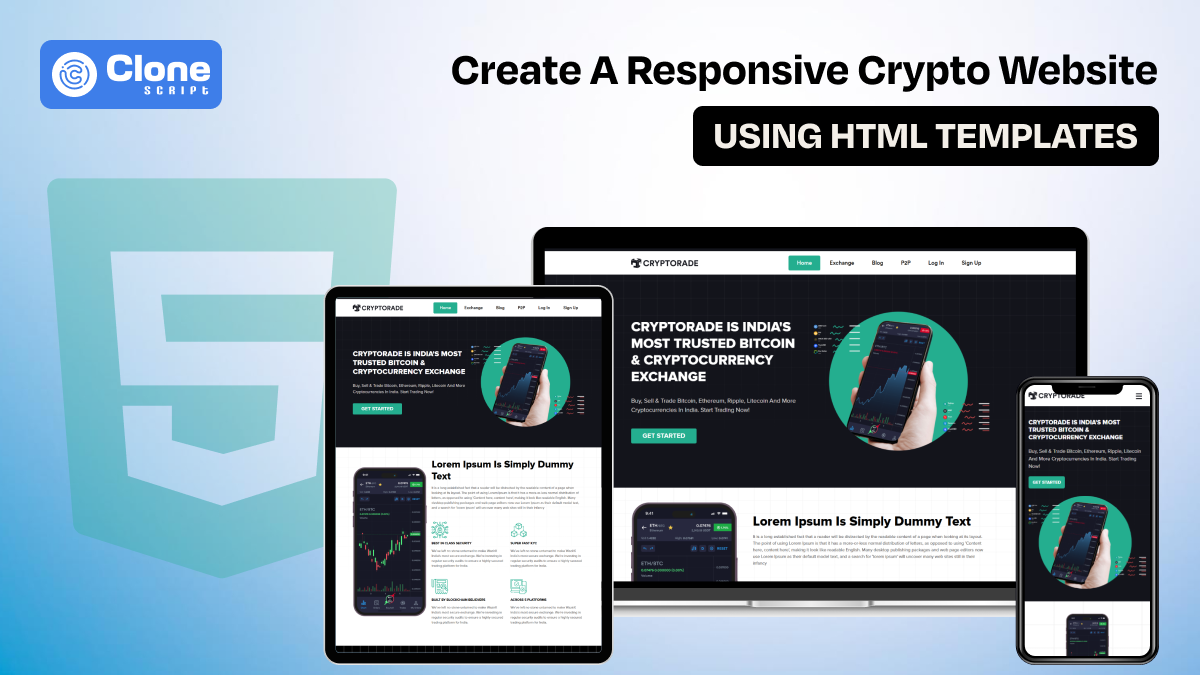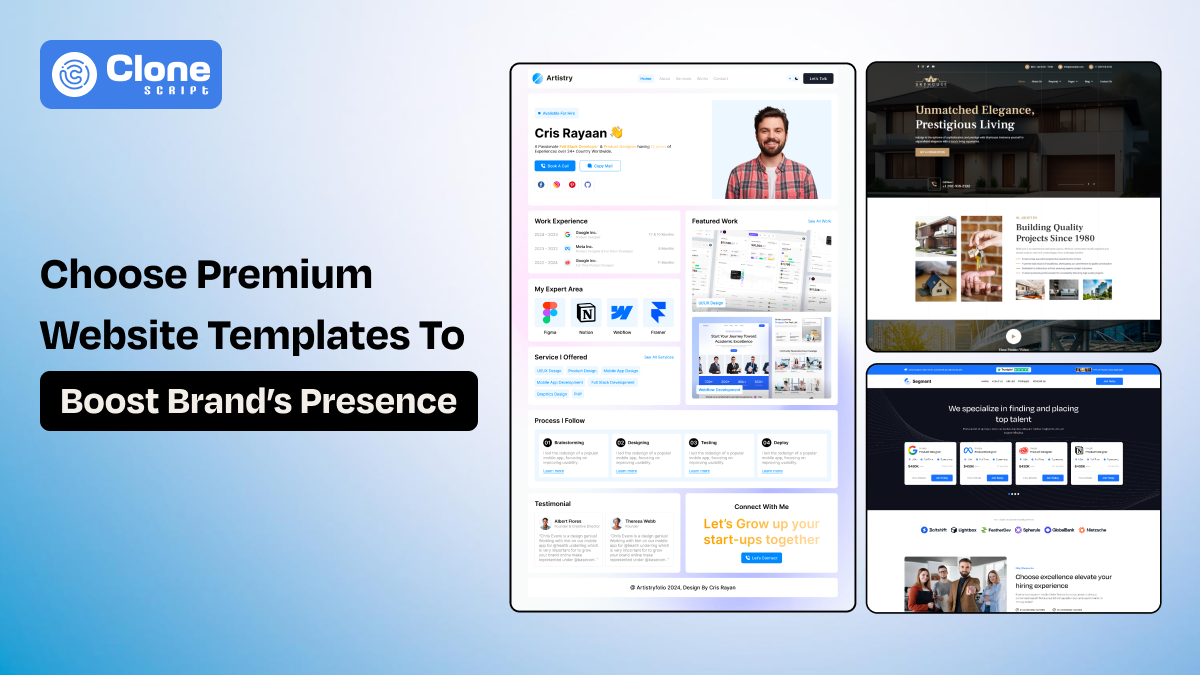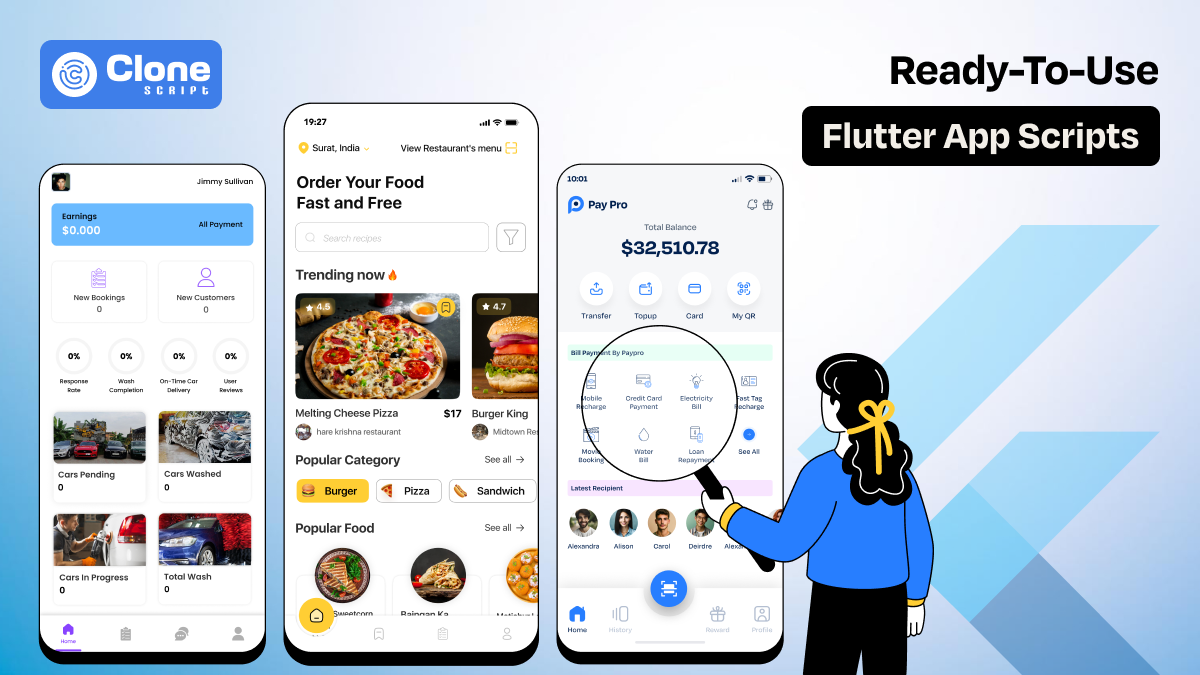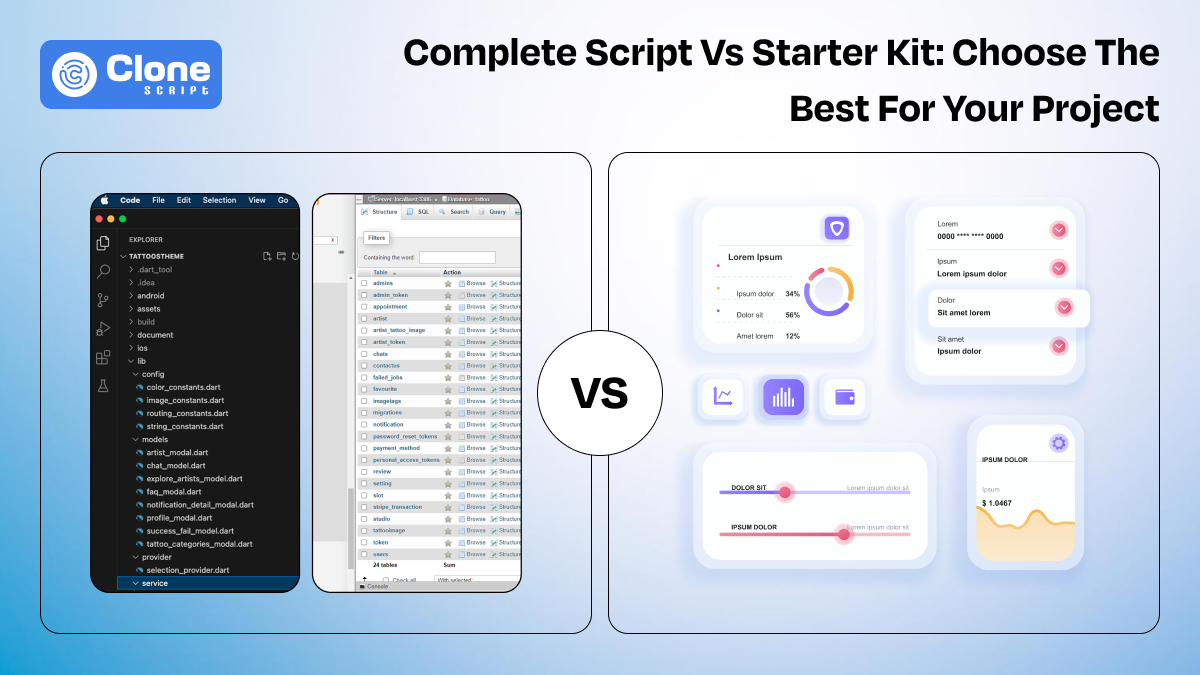How to Build a Responsive Crypto Site with an HTML Template
The crypto space never sleeps, and neither do its users. Whether they’re staking tokens at midnight, tracking prices during lunch, or diving into new DeFi protocols from their phones, crypto users demand seamless digital experiences anytime, anywhere.
In this high-speed, high-stakes ecosystem, your website is more than just a landing page. It's your project's credibility, your first pitch, and your only chance to gain trust.
But let’s face it: building a site from zero takes time, and time is one thing startups, devs, and Web3 founders rarely have. That’s why smart builders are ditching lengthy dev cycles and turning to responsive HTML crypto templates as lightweight, pre-coded, and designed to look flawless on any screen.
This guide will show you exactly how to build a responsive crypto website using HTML, fast, without compromising on design, performance, or user experience.
Why Your Crypto Website Needs to Be Responsive
Think about how users access the web today: on phones, tablets, laptops, and everything in between. Now apply that behavior to the crypto space. Users are checking token prices while commuting, reading whitepapers on their tablets, or connecting their wallets from their mobile browsers. If your site doesn't adapt beautifully to every screen size, you're instantly losing trust and traffic.
A responsive crypto site delivers:
-
Better User Experience (UX): Smooth navigation across all devices keeps users engaged longer.
-
Improved SEO: Google prioritizes mobile-friendly sites in search rankings. So, your website will appear in the web results and get clicks from potential users.
-
Higher Conversion Rates: Whether it’s newsletter signups or token sales, responsiveness improves CTA effectiveness.
-
Brand Credibility: A professional-looking crypto landing page design adds legitimacy to your project in an industry where trust is currency.
In short, responsive design isn't just nice to have. It’s a key option in how users perceive your brand.
Why Use an HTML Template Instead of Building from Scratch?
If you're a developer, the thought of building a site from the first step may sound appealing. Until you realize how many hours go into writing boilerplate code, handling cross-browser compatibility, and setting up responsive grids.
Using an HTML template gives you:
-
Speed: Get a beautiful UI live in hours, not weeks. Start a necessary front-end website development using the pre-built layouts.
-
Stability: Templates are usually tested across browsers and devices. So, whether you’re making a web app for crypto trading or a DeFi portal, it’s optimized for a better user experience.
-
Customization Options: You can still inject your unique brand identity and features. Customizing a website template becomes easier with documentation support and tutorials.
-
Focus on Core Logic: Spend your energy integrating Web3 wallets, charts, or APIs instead of building layouts from zero.
Most crypto website design template packs come with pre-designed sections like tokenomics charts, roadmap timelines, team profiles, and more, perfect for crypto projects.
Since these templates are based on HTML5, CSS3, and include frameworks like Bootstrap, they provide a modern structure and clean code you can build on.
What to Look for in a Crypto HTML Template?
When choosing a responsive HTML crypto website template, here’s what developers should evaluate:
1. Mobile Responsiveness
Your users won’t always be on a desktop. Many will visit your site from a phone or tablet, especially in the crypto space. A good template should automatically adjust to any screen size, offering a smooth and consistent experience across all devices.
2. Crypto-Specific UI Elements
Generic templates won’t cut it when your project needs to show token metrics, ICO countdowns, or wallet integrations. Look for a crypto HTML template that includes built-in components like:
-
Token charts
-
Sales progress bars
-
Roadmap timelines
-
Investor-ready landing sections
It can help you avoid investing time in a custom website UI and UX design.
3. Clean Codebase
A clean, well-organized HTML/CSS structure (ideally using SCSS) makes your life easier when customizing layouts or adding features. It also reduces debugging headaches and allows you to integrate backend logic or APIs much faster.
4. SEO-Optimized Markup
Search engines rely on structured, semantic HTML to index your content properly. Using a template with good SEO fundamentals, like proper use of heading tags, meta tags, and alt attributes. It can help your crypto site rank higher and gain organic traffic.
5. Dark Mode Support
A large part of the crypto community prefers dark-themed interfaces, both for style and eye comfort. Having the option to switch between light and dark themes gives your users control and adds to your project's perceived polish.
6. Performance-Ready
Every second of page load time counts, especially when you're pitching to investors or onboarding users. Choose a template that's lightweight, minimizes HTTP requests, and uses compressed assets to ensure lightning-fast performance.
Build a Responsive Crypto Site Using an HTML Template in 6 Steps
So you’ve got your crypto idea. Now, it’s time to build a sharp, mobile-ready website that reflects it. Below is a clear, step-by-step guide to go from a blank project folder to a fully functioning responsive crypto site using an HTML template.
Step 1: Choose the Right Crypto HTML Template
Before you dive into code, you need the right starting point. Head to trusted platforms like All Clone Script, ThemeForest, or even GitHub and look specifically for templates labeled:
-
“crypto website template HTML5”
-
“Responsive HTML crypto website template”
-
“crypto landing page HTML template”
Make sure the design matches your project’s tone. Whether it’s an NFT marketplace, DeFi app, or token sale page. Once you’ve found the right one, download the zip file and extract the contents; you’re ready to roll.
Step 2: Customize the Template
Open the project folder in your code editor (like VS Code) and start poking around. Most templates follow a familiar structure:
-
Start with the homepage (index.html) and replace all the dummy content: project name, tagline, token data, and team info with your real content.
-
Swap out placeholder logos and icons with your brand assets, and update links to your whitepaper, social profiles, and token dashboard.
If the template includes SCSS files or customizable CSS variables, use them to adjust brand colors, fonts, and layout spacing. It’s way cleaner than overriding styles manually. In just a couple of hours, you’ll have a fully branded HTML5 crypto website tailored to your project.
Step 3: Test Responsiveness Across Devices
This step separates average templates from great ones. Open Chrome DevTools, toggle device mode, and preview your site on screen sizes like iPhone 14, iPad, and large desktops.
Watch out for:
-
Sections breaking out of view
-
Text overlapping or becoming unreadable
-
Buttons that are too small to tap
-
Misaligned charts or progress bars
If you notice any layout issues, inspect the CSS media queries and adjust breakpoints or padding values. A good crypto website design template should already handle most of this, but you may still need to fine-tune it for your content.
Step 4: Add Functional Elements
Now that your site looks the part, let’s make it do something.
-
Want to collect emails before your token launch? Connect a newsletter form to Mailchimp or Formspree. Integrating CRM tools with email marketing is a good option to keep your project appealing.
-
Want users to check live token prices? Pull real-time data from CoinGecko API or CryptoCompare using JavaScript.
-
Need wallet support for NFTs or DeFi? Integrate MetaMask or WalletConnect if you’re adding Web3 logic.
-
Planning to post updates? Add a simple blog section where static HTML works, or you can embed content from a CMS or blog platform.
Even with a static crypto template, modern APIs and JS libraries make it easy to bring your site to life.
Step 5: Optimize for Performance & Launch
Before pushing live, polish everything for speed and follow crypto SEO practice.
-
Minify your CSS and JS using tools like Terser or online compressors
-
Compress images to reduce load times using TinyPNG, ImageOptim, or Squoosh
-
Add meta tags like title, description, and Open Graph tags for better visibility on search engines and social shares
-
Set up your hosting:
-
Use GitHub Pages if your site is static
-
Try Netlify or Vercel for free CI/CD hosting and SSL
-
Or go old-school with shared hosting from Hostinger, Bluehost, or others
-
Finally, run your site through testing tools like Google Lighthouse and GTmetrix. These tools catch speed barriers, SEO misses, and mobile layout issues before users do.
Just like that, you’ve launched a fully functional, responsive HTML site built with clean code, modern tools, and Web3 potential. No backend required, and no wasted time.
Conclusion
Building a professional, responsive crypto website doesn’t have to be complicated. With the right crypto HTML5 website template, you can launch faster, ensure mobile optimization, and deliver a seamless user experience across all devices. Instead of wasting time on layout code, focus on what matters: your product, content, and integrations.
A well-crafted responsive design template for every screen gives your project credibility and performance from day one. Whether you're showcasing tokens or running an ICO, now you know how to create a crypto website with an HTML template, the smart, efficient way to stand out in the crypto market.
 BTC - Bitcoin
BTC - Bitcoin
 USDTERC20 - USDT ERC20
USDTERC20 - USDT ERC20
 ETH - Ethereum
ETH - Ethereum
 BNB - Binance
BNB - Binance
 BCH - Bitcoin Cash
BCH - Bitcoin Cash
 DOGE - Dogecoin
DOGE - Dogecoin
 TRX - TRON
TRX - TRON
 USDTTRC20 - USD TRC20
USDTTRC20 - USD TRC20
 LTC - LiteCoin
LTC - LiteCoin







